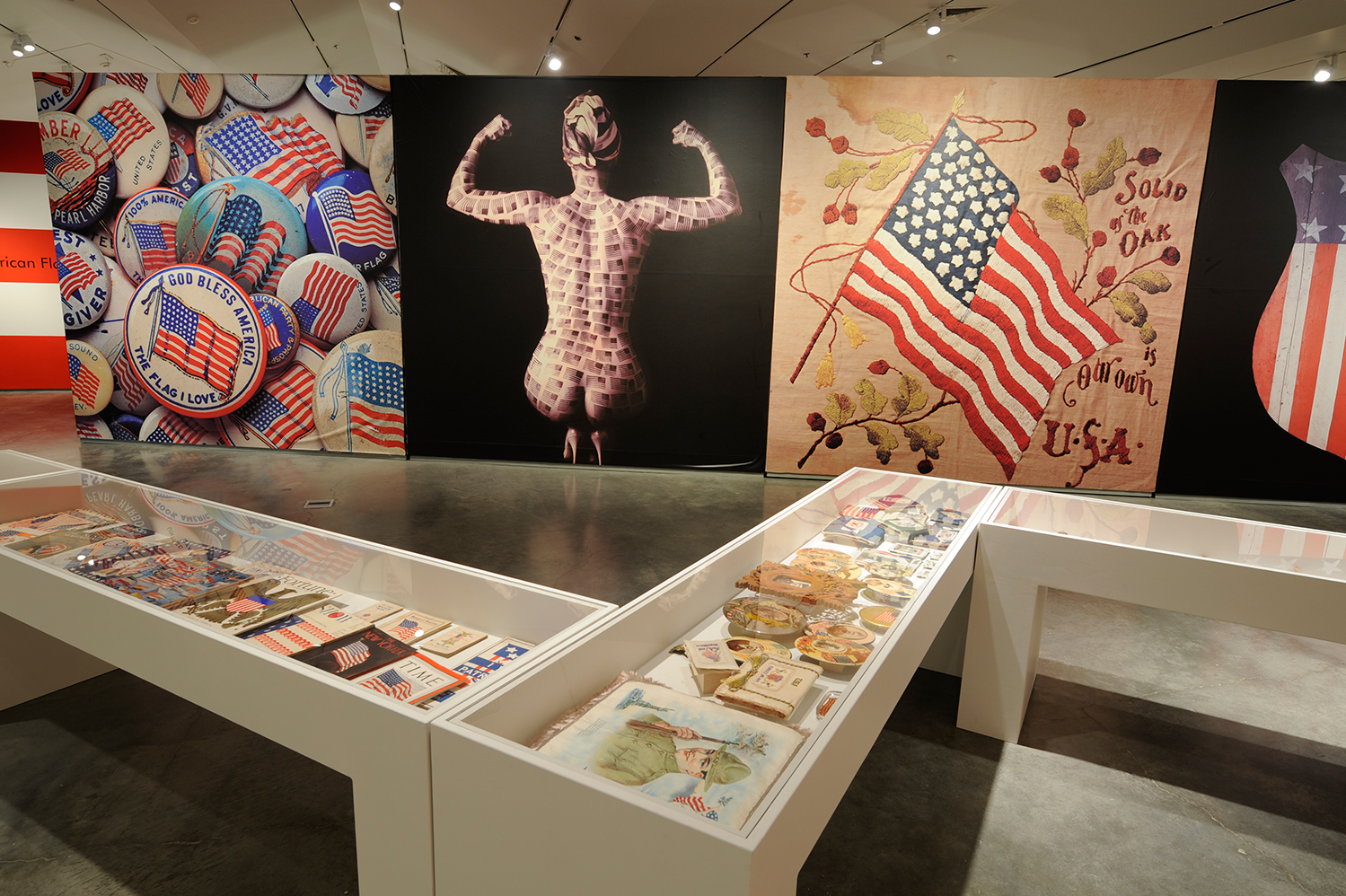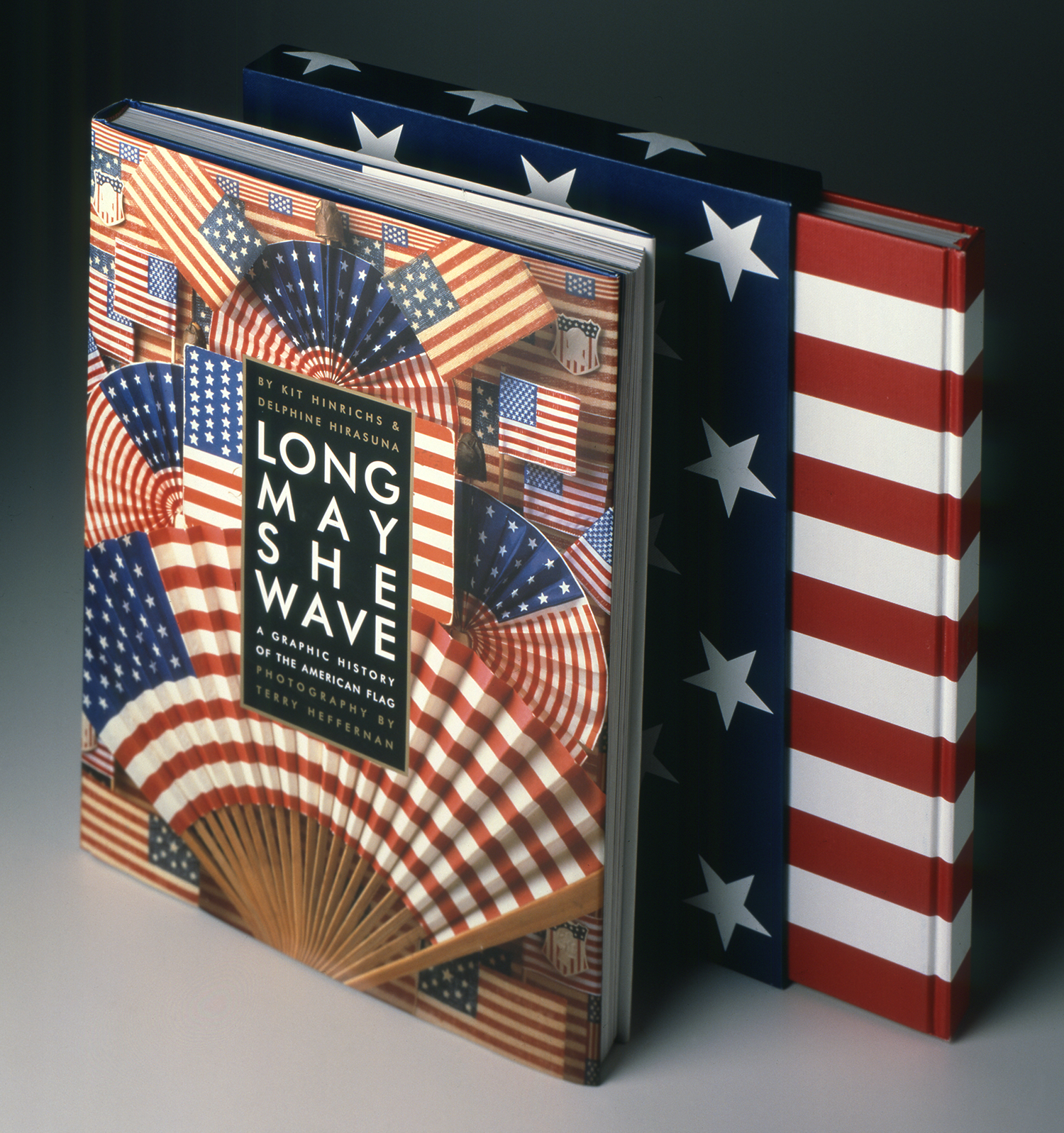
profile / alumni / graphic-design
July 03, 2019
Written by: Mike Winder
Images courtesy of Studio Hinrichs
Long May She Wave: Alumnus Kit Hinrichs' Love for the American Flag Runs Deep
“The American flag is not only a symbol that everyone recognizes,” writes alumnus Kit Hinrichs (BFA 63 Advertising) in his introduction to Long May She Wave: A Graphic History of the American Flag, a 2001 coffee table book that features 500 objects from his collection of artifacts featuring the American flag. “It is also one to which everyone, not only Americans, has a personal and often visceral response.”
Long May She Wave was published in 2001, just a few weeks before the 911 tragedy. An exhibition of the same title—also featuring Hinrichs' collection—ran at the American Institute of Graphic Arts in New York and the San Jose Museum of Art in 2002, and was timed to coincide with the 225th anniversary of the American flag. The exhibition later travelled to the Nevada Museum of Art in Reno, Nevada (2008); the Frazier History Museum in Louisville, Kentucky (2014); and the Mercer Museum in Bucks County, Pennsylvania (2016).

Hinrichs’ collection contains more than 5,000 objects that include a thirteen-star post-Civil War flag from 1866 made by Union general Benjamin “the Beast” Butler; an elaborate beaded violin case, indicative of the work of the Brule Sioux tribe in South Dakota; artist Ray Beldner’s Dollar Flag (1997), constructed of 157 stitched dollar bills; and a UC Berkeley-produced anti-war placard from 1968, featuring red rifles as stripes and bombers as stars.
In his introduction, Hinrichs points out that people have longed used the flag to express their feelings toward the country. “They have used it to legitimize their cause, whether a product or a political campaign,” he writes. “They have shown their displeasure over a political position or a military activity by their vilification of it. And they have proclaimed their patriotic pride through it, even when reticent to express themselves in actual words.”
Last year the U.S. Post Office issued a “Forever” stamp designed by Hinrichs—a digital illustration showing a flag with crisp folds and shadow on the visible back portion of the flag to suggest a sense of depth. The stamp was designed to celebrate the bicentennial of the passage of the Flag Act of 1818, which provided the basic design of the American flag as having 13 stripes symbolizing the original 13 colonies, and one star for each state of the Union.



These two projects are just the tip of the iceberg when it comes to Hinrichs’ life-long love affair with the American flag. In addition to Long May She Wave, Hinrichs has written and/or designed three other books on the American flag: Stars and Stripes, 100 American Icons and The American Flag: Two Centuries of Concord and Conflict.
In 2008, the studio curated and designed an 8,500-square foot exhibition of Hinrchs’ flag collection for the Nevada Museum of Art. The studio has also used the flag in many campaigns over the years, including numerous posters for AIGA’s “Get out the Vote” campaign.
Hinrichs served as a principal in several design offices in New York and San Francisco before spending 23 years as a partner of Pentagram, the international consultancy. In 2009, Hinrichs opened his independent design firm, Studio Hinrichs, in San Francisco.
Hinrichs recently stepped down from his position as an ArtCenter trustee, after having served on the board for 23 years.
“It was the skills I learned at ArtCenter that gave me the ability to recognize opportunities when they arose and the confidence to shift directions in order to capitalize on them when they occurred,” wrote Hinrichs in a recent Storyboard. “I always acknowledge how my ArtCenter education was the ‘Rosetta Stone’ for any successes I’ve accomplished."





